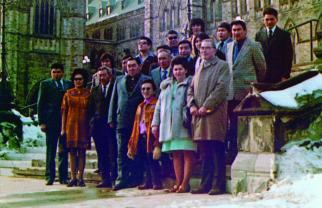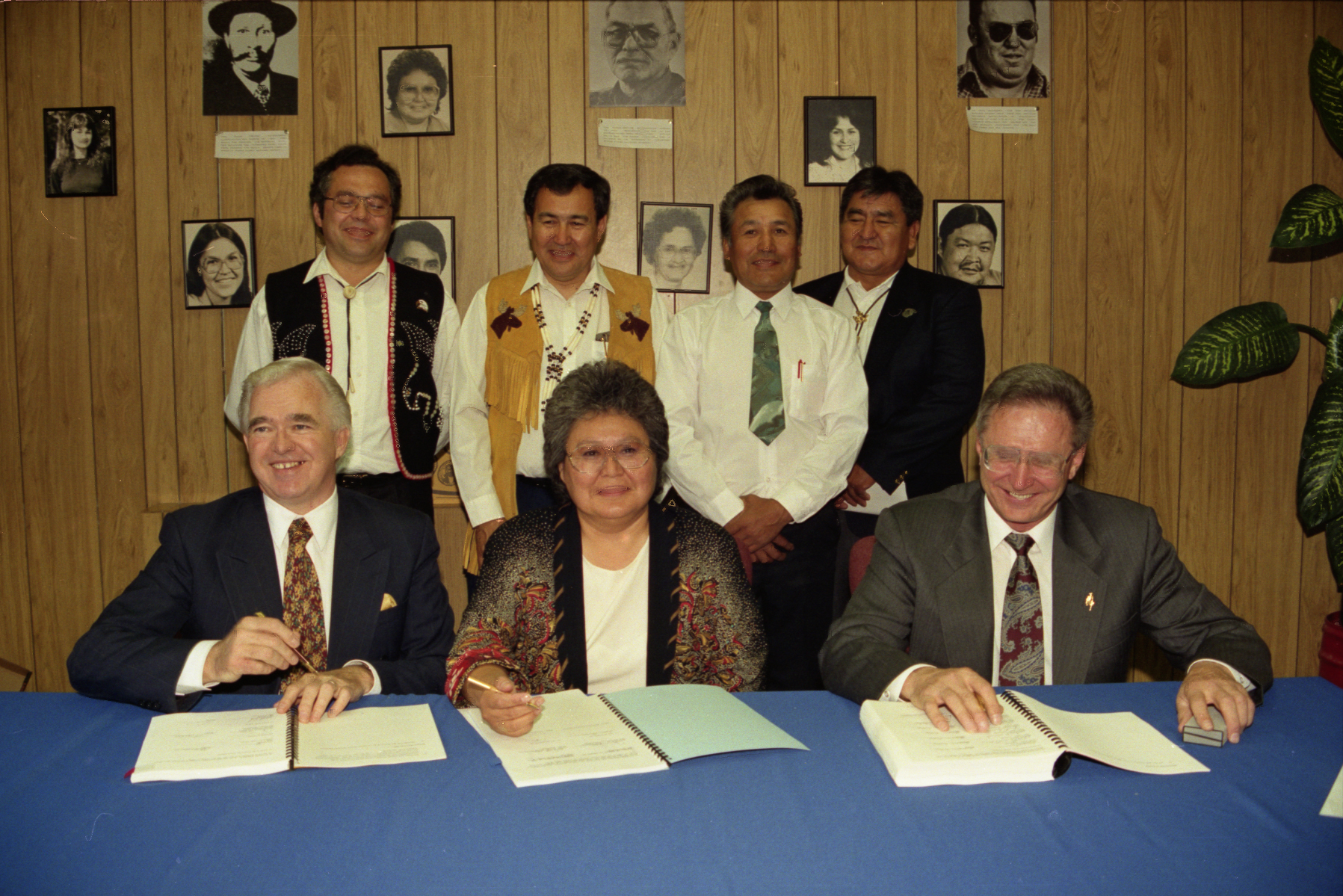
Pathways: The changing landscape of the Yukon’s governance
In 2023, the Yukon celebrated a number of big anniversaries: 125 years since we became a territory, 50 years since Together Today for Our Children Tomorrow, 30 years since signing the Umbrella Final Agreement and 20 years since devolution of federal powers to the Yukon.
Relationships between the Yukon government and Yukon First Nations governments have evolved immensely, with challenges and successes marking the way.
The vision of Yukon First Nations has remained constant over decades. From Chief Jim Boss’s calls for a treaty in the 1900s to Together Today for Our Children Tomorrow in 1973, First Nations have been seeking a greater role in Yukon governance. They want partnership and control over the programs and services that affect their people.

The TRC Calls to Action and the United Nations Declaration on the Rights of Indigenous Peoples
Since the Truth and Reconciliation Commission (TRC) released its reports in 2015, reconciliation has become a driving force for change in the Yukon and across Canada.
“Reconciliation and collaboration with First Nations governments is a central commitment of the Yukon government,” says Premier Ranj Pillai.
Documents like the TRC Calls to Action and the United Nations Declaration on the Rights of Indigenous Peoples (the Declaration) “shine a strong light on the relationship between First Nations and the Crown and the wrongs of the past,” says Brian MacDonald. “I think they put pressure on governments and really emphasize the need for us to do better as public governments.” A citizen of the Champagne and Aishihik First Nations, Brian is the Assistant Deputy Minister of Aboriginal Relations with the Government of Yukon.
When thinking about these national and international documents, Council of Yukon First Nations Grand Chief Peter Johnston emphasizes that Yukon First Nations have been very clear in their vision for reconciliation, since long before documents like the Calls to Action and the Declaration came along.
“The first priority is to use the tools we negotiated for over 20 years,” says Grand Chief Johnston. “Yukon has the best Agreements in Canada, maybe the world.”
He says Yukon First Nations have been “studied, diagnosed and dissected for years” and he urges this must end and it’s time to start meaningfully implementing Agreements.
“The Declaration and the TRC Calls to Action are validations of the vision of First Nations leaders who developed Together Today for Our Children Tomorrow and the Final and Self-Government Agreements,” says Brian. “Their vision of self-determination was a strong prosperous Yukon, where First Nations were equal partners.”
”The Calls to Action and the Declaration influence and inform the Yukon government’s approach to reconciliation,” says Premier Pillai, “but it's the modern treaties and shared priorities set through government-to-government discussions and the Yukon Forum that are the framework for reconciliation.”

Capacity challenges
Yukon governance was transformed between 1993 and 2005 with the signing of the Umbrella Final Agreement and 11 Final and Self-Government Agreements, in addition to the changes brought by devolution.
The Government of Yukon and Yukon First Nations governments are relatively new in their existing roles and all are facing capacity challenges to meet their expanding mandates.
“We're all in this period of intense transition,” says Daryn Leas, a Tr’ondëk Hwëch’in Citizen and lawyer. “Through land claims, the Yukon government assumed more responsibility for partnership and working with First Nations. They also took on responsibilities under devolution for lands, waters and forestry.There's a lot of pressure for staff to assume these new responsibilities.”
Grand Chief Johnston is also concerned about capacity challenges. “Yukon First Nations should have a role in every part of governance in the Yukon, but we aren’t able to take advantage of all those opportunities,” he adds. “Capacity is a huge issue.”
He highlights the fact that many Yukon First Nations people are suffering from the impacts of colonization. Many people cannot focus much beyond survival as they struggle with the opioid crisis, poverty and trauma.
“Our success depends on the human capacity both in First Nations communities and in the Yukon government,” says Brian. He points to the growing Yukon population and influx of new public servants. “It's going to be important that we retain and recruit people into our governments who understand the importance of the relationships between Yukon and First Nations governments and of Yukon treaties.” Brian states that a strong education system will be an important part of the solution.
From negotiations to implementation
“The Yukon leads the rest of Canada. There's no other jurisdiction with as many self-governing communities. We are seeing something very unique here: collaborative governance,” says Daryn.
The relationships between the Yukon government and First Nations are shifting as the process moves from negotiations to implementation. The last Final and Self-Government Agreements were signed in 2005 with the Kwanlin Dün First Nation and Carcross/Tagish First Nation.
Daryn and Brian point to the shift from adversarial relationships during negotiations towards collaborative implementation of Agreements and remind Yukoners that this is a big adjustment.
“Negotiations are adversarial,” says Daryn, who was involved in land claims negotiation. “The process can be tense and frustrating—for all sides.”
“Once the Agreements were done, we became partners in implementing those Agreements,” he adds. “This has been challenging. It takes a long time to develop trust, particularly with those you’ve been negotiating with.”
Keys to success
“We know that we cannot meet the needs of Yukoners on our own,” says Premier Pillai. “We need close collaboration and partnership with First Nations governments to achieve a strong economy, build healthy communities and protect the environment.”
“The concept of reconciliation is, first, acknowledging historical wrongs, and second, undertaking to do things more collaboratively going forward,” says Brian.
“The Yukon Forum and the Intergovernmental Forum are gatherings where we identify areas to work together as governments,” says Premier Pillai.
“The key to success is working together,” says Daryn. “No longer can we govern lands or resources in silos: this is my jurisdiction and that's your jurisdiction. If we proceed on that basis, it means weaker management for land and resources and poorer services for Yukoners.”
Brian is clear that reconciliation is an ongoing process. “We'll never achieve perfection. It's an evolving relationship that has to be recalibrated and rebalanced, and we have to be willing to do things differently and be introspective.”
Navigating change
Yukon leaders underscore that when talking about reconciliation we're talking about change, and change is hard and it takes time. Reconciliation means undoing decades of colonial and racist government policies, laws and practices and shifting our thinking, our culture and our institutions.
